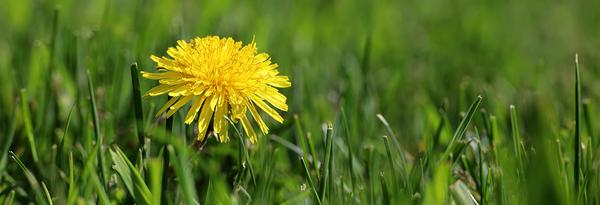
Bee Haven: Transforming Backyards in the Treasure Valley for Pollinators
Discover the vital role bees play in our ecosystem and the urgency of protecting their populations. Explore bee-safe practices for gardens, lawns, landscapes, and patios. Let's make your backyard an irresistible oasis for these precious pollinators and add natural beauty to the Treasure Valley.
Why Bees Matter in Idaho and Beyond
Bees are vital for Idaho's ecosystem and homeowners alike. As key pollinators, they ensure crop reproduction and biodiversity. Despite concerns about stings, bees are typically docile and only act defensively. In fact, their presence indicates a flourishing ecosystem and the potential for a thriving garden. Embracing these industrious pollinators fosters a harmonious balance between nature and our homes.
Bee-Safe Practices in the Garden
In our quest to create a bee-friendly oasis, it's essential to keep weeds and harmful insects at bay without jeopardizing our beloved pollinators. Fortunately, some eco-friendly practices and products can help achieve this delicate balance. Start by implementing natural weed control methods such as mulching with alfalfa hay, grass clippings, or utilizing Zamzows Compost Plus. These options effectively suppress weeds while enriching the soil with organic matter and trace minerals. For manual weeding, consider regularly tending to your garden beds to keep weeds under control. When necessary, opt for organic herbicides that are safe for bees and other beneficial insects.
When managing harmful insects, adopt integrated pest management (IPM) techniques. Promote biodiversity by attracting or releasing beneficial insects like ladybugs and praying mantises and incorporate insect-repellent plants into your garden. As a last resort, consider targeted treatments using natural insecticides like Zamzows Last Call and insecticidal soap. By adopting these bee-safe practices and utilizing the recommended products, we can safeguard our gardens from unwanted intruders while preserving a thriving habitat for our cherished winged friends.
Embracing Dandelions: Rethinking the Definition of a Healthy Lawn
Maintaining a healthy lawn goes hand in hand with creating a bee-friendly backyard. Proper feeding and watering are key to nurturing lush, resilient turf. Feed your lawn with products like Zamzows Lawn Food and Zamzows Huma Green, specially formulated for the unique soils of Treasure Valley. These products promote healthy soil without the use of harmful chemicals, naturally reducing weed growth through healthy competition.

It's time to reconsider what a healthy lawn truly looks like. Instead of striving for an immaculate, monoculture carpet, consider embracing the natural beauty of diversity. Dandelions, for instance, serve as an important food source for bees, providing vital nectar early in the season when other flowers are scarce. By allowing some dandelions to flourish in your lawn, you not only provide nourishment for bees but also add vibrant pops of yellow to the landscape. Embracing a few colorful blooms can create a more dynamic and bee-friendly lawn. If you decide to manage dandelions, please wait until after they have flowered, allowing bees to benefit from their nectar. When necessary, opt for natural herbicides like Pulverize Lawn Weed Control to minimize impact on bees and other beneficial insects. Together, we can redefine what a healthy lawn means and create a haven for both bees and human enjoyment.
Keeping Your Patio Bee Safe
Creating a bee-safe patio while effectively deterring wasps, hornets, and yellow jackets is essential for a harmonious outdoor space. To keep your patio free from these pests while safeguarding bees, consider employing targeted trapping methods. Explore our wide selection of traps designed specifically to attract and trap wasps, hornets, and yellow jackets, while leaving bees unharmed. This ensures a focused approach in addressing the nuisance without harming beneficial pollinators.
In addition to pest control, make your patio an inviting haven for bees and other pollinators by incorporating patio pottery filled with beautiful flowers. Opt for a variety of blossoms that attract bees, butterflies, and hummingbirds. Hanging baskets with carefully arranged flower arrangements can provide an enticing display while supporting local pollinator populations. Follow this link to read more about flowers you can plant on your patio and in your landscape that bees will love! Buzzworthy Blooms: Exploring the Treasure Valley's Most Sought-After Pollinator Flowers
To further support bees, consider providing a water source on your patio. Fill a shallow dish or bowl with fresh water and place small stones or pebbles inside, allowing bees to safely perch and drink. This simple addition can be a valuable resource for thirsty bees, especially during hot and dry periods.
It's important to note that while wasps and yellow jackets can be a nuisance, they can also pose a threat to bee colonies. These aggressive insects may prey on bees, compete for resources, or invade beehives. By implementing effective pest management strategies, creating attractive spaces for bees to thrive, and providing a water source, we can strike a balance that safeguards both our outdoor enjoyment and the well-being of these essential pollinators.
Supporting Bees and Connecting with Local Beekeepers
By implementing more bee-safe practices in your backyard, you can create an enjoyable and nurturing environment for these vital pollinators. From planting bee-friendly flowers and embracing dandelions to employing eco-friendly pest control methods and providing a water source, every effort counts. Remember, if you encounter a swarming bee situation, don't panic. Instead, reach out to the Treasure Valley Beekeepers Club, a local group of beekeepers who can safely remove swarming bees free of charge. Together, we can protect and support our precious bee populations while enhancing the beauty and vibrancy of our outdoor spaces.
